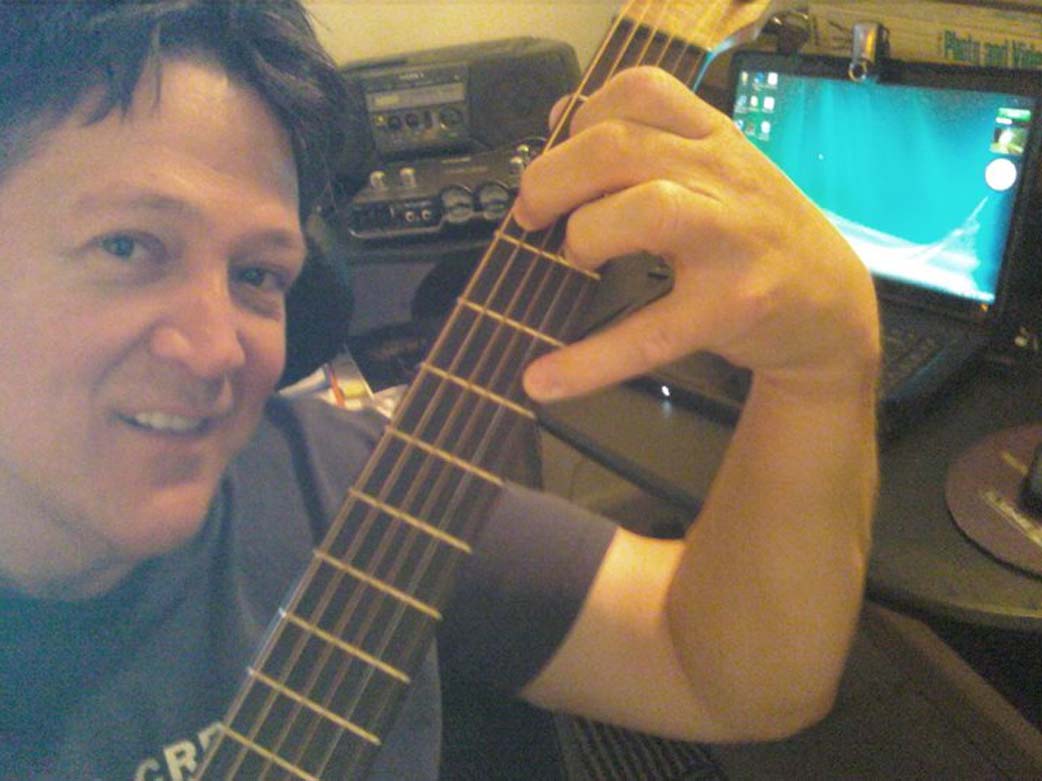
Hello everyone, and welcome to this month’s installment. I hope that you all have been enjoying yourselves in your continuing pursuit of worship to our Lord, through music, I know I sure have!
I heard someone ask a question to a group of worship leaders several years ago at a worship conference. The question was, "How many of you worship leaders, plan on leading worship, even when you grow old?" I don’t know about you, but as for me, I plan to continue to lead worship for as long as I am able to continue to play and hold my guitar and as long as I have a voice to sing with. There is nothing quite like leading others in worship to the king of kings and Lord of Lords through musical expression, and I count it an amazing joy and privilege to do so. I hope this is your experience as well.
This month, I would like to cover the use of the capo when playing the acoustic guitar. The capo is a great tool which provides us with several useful options. One of my favorite ways to use the capo, is to take a song such as “Everlasting God” which I usually play in the key of C (for my particular vocal requirements - your ideal key may be different), and place the capo at the 5th fret, while using the chart written for the key of G. The capo placed at the 5th fret will give you the key of C, when using the G form.
*Theory Alert*
The key of C is a perfect 4th above G. If you play through the Major scale in G, you will see it goes: G, A, B, C (and continues, D, E, F# and G octave). So, playing open G form with this capo'd configuration gives you the key of C. The reason this works well for this song is that the choice of chord voicings that are used in the key of G sound better - and fuller - for the acoustic guitar because of the open strings ringing away. The open chord forms have a much richer sound, particularly when using the acoustic guitar, and are retained when the capo is then put in place, no matter what fret you ultimately end up on.
And this brings up a second benefit of using a capo: you don't have to 'rearrange' the song in a different key with different chords than what's written out on the chart. You are still able to use the G form and other written chord shapes as they are because, as you know, the capo acts like the nut and allows you to do just this thing, retaining the same chord shapes as the chart calls out. Yes, I'm being a bit obvious here. But I want people who have never used a capo to fully understand the potential this brings to their playing, to change keys without rearranging everything, including chord voicings! (That's another column altogether! -Ed.)
You are, of course, free to use and experiment with any chord voicings you like, which, depending on your chord choices, will color the song accordingly. An added benefit here is that when leading with an acoustic capo'd at the 5th fret (using the G form), a second guitar, often an electric, will more than likely be playing without a capo, and so using Barre chords and possibly open voiced chords along with things like arpeggios and filler single note lines for accent and color.
When playing with an electric guitar player, having both the acoustic and the electric guitar playing the exact same chord voicings in the same places on the neck can cause a cluttered and/or muddy sound; there is no sense of distinction or variation between the two guitars in the instrumentation.
Another benefit of using a capo is to unclutter the sound. Putting the acoustic guitar in a higher register sonically, frequency wise, and keeping the electric guitar in a lower register during rhythm passages will help to separate their distinct voices and make mixing the two together easier. It also helps create a broader range of sound between the two instruments, and therefore actually makes the sound fuller than two electrics cranked (or through the use of pedals) to distorted overdriven levels. Distortion and overdriven guitar sounds actually muddy up a mix more than you think, making it very difficult to create a good blend between instruments.
If you've ever listened to Hillsong United's music, you will notice one electric is always very clean sounding (usually the color instrument adding single note or arpeggiated lines). The other guitar can then go from clean to distorted levels when playing the strummed rhythm parts, retaining the distinction between the two.
One thing that the use of the capo adds to your sound on the acoustic guitar, is a higher pitched, and sometimes chimey, tone. This is especially true the higher up the neck you play with the capo.
Take the time to experiment using a capo, especially when playing your acoustic guitar. If you’re anything like me, you will, first of all, begin to start getting new ideas, enjoying all of the new found awesome tones you are hearing, then 2 or 3 hours later, when you realize that you just missed an important appointment, at least you will be able to say, “Boy, was that fun”! Oh well, until next time, pull out that capo, start experimenting, and remember to have fun as you worship our King!
JB